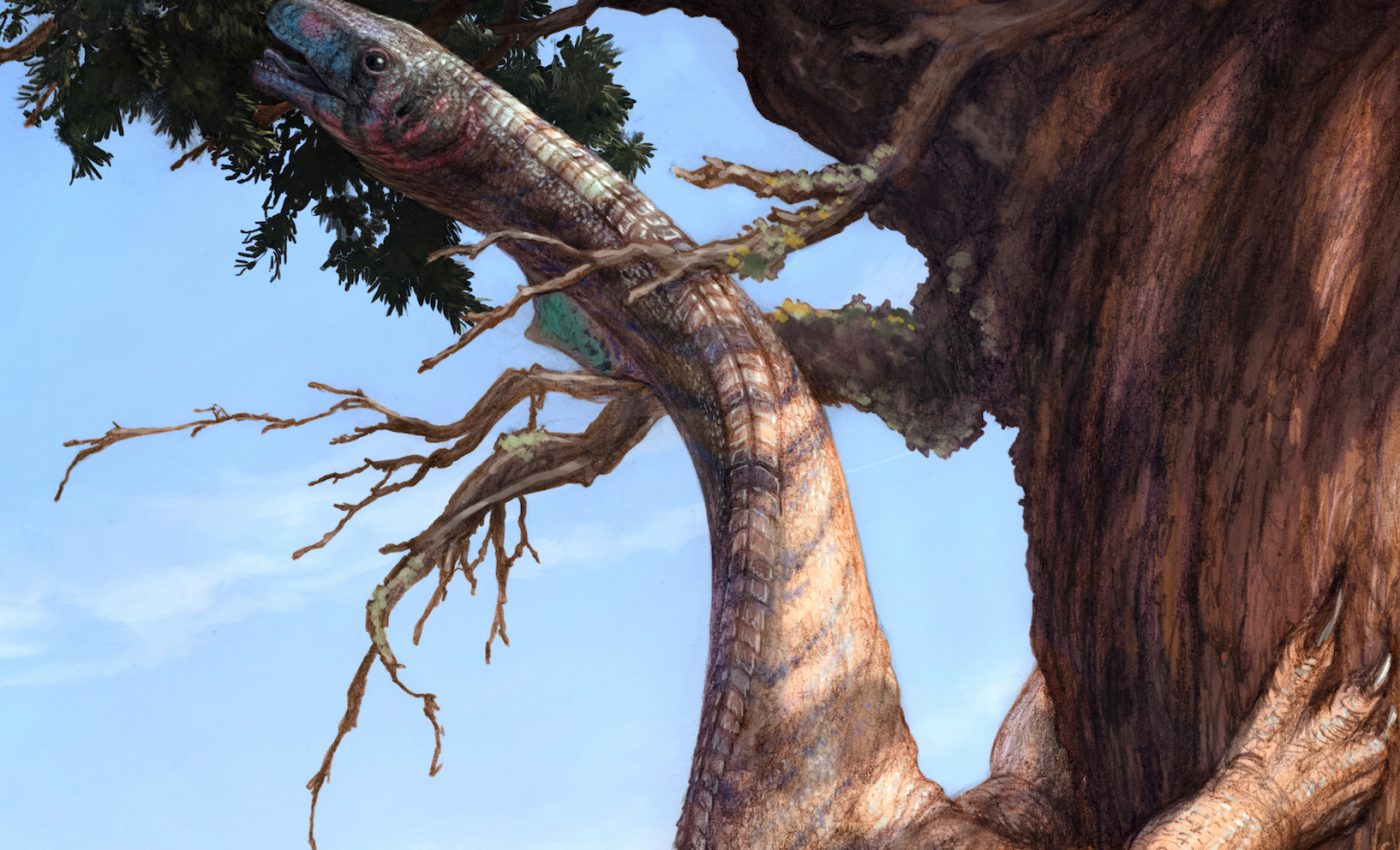
How did plant-eating dinosaurs become the largest animals in history?
A team of researchers has described the well-preserved remains of a sauropod which lived about 185 million years ago during the Early Jurassic. The fossils may help scientists to understand how plant-eating dinosaurs such as the Brontosaurus grew to be so large.
By the time they were driven to extinction, sauropods weighed as much as 100 tons. It has been a mystery how these animals managed to become the largest land animals in history when their ancestors were small enough to be found in a modern-day petting zoo.
A dinosaur called Sarahsaurus aurifontanalis belonged to a group of dinosaurs that preceded sauropods, and may hold important clues about their enormous size.
Adam Marsh, who is now a paleontologist at Petrified Forest National Park, led the study while pursuing his master’s degree at the University of Texas at Austin.
“Sarahsaurus preserves in its anatomy the anatomical changes that were happening in the Late Triassic and Early Jurassic that were occurring in the evolutionary lineage,” said Marsh. “It can help tell us how getting big happens.”
The description was based on two Sarahsaurus skeletons discovered in Arizona by study co-author Professor Timothy Rowe in 1997. The bones are still partially linked together into body parts such as the hand and tail, and the only major missing part is the skull.
“The specimens are well preserved in three dimensions and remarkably complete, which is very rare in the fossil record,” said Matthew Brown, the director of the Jackson School Museum of Earth History Vertebrate Paleontology Collections. “Such complete specimens help paleontologists better understand the fragmentary and incomplete fossils remains we typically find.”
According to Marsh, Sarahsaurus was a “ground sloth-like” animal that stood upright and walked on its hind-legs. The dinosaur had powerful forelimbs with a large, curved claw on the first finger of each hand. It shared many things in common with the earliest sauropods, but features such as a bigger body size and longer neck vertebrae were beginning to foreshadow how massive its relatives would become.
Marsh is currently working on another study that could shed more light on how sauropods evolved. He said that the two Sarahsaurus skeletons examined for this paper are a great addition to the project.
“We’ve got two individuals from basically the same hole in the ground with different bumps and grooves on their femora,” said Marsh. “It lends itself really well to this comprehensive anatomical description and it’s going to be really important for comparisons of early dinosaur anatomy.”
The study is published in the journal PLOS ONE.
—
By Chrissy Sexton, Earth.com Staff Writer
Image Credit: Brian Engh













